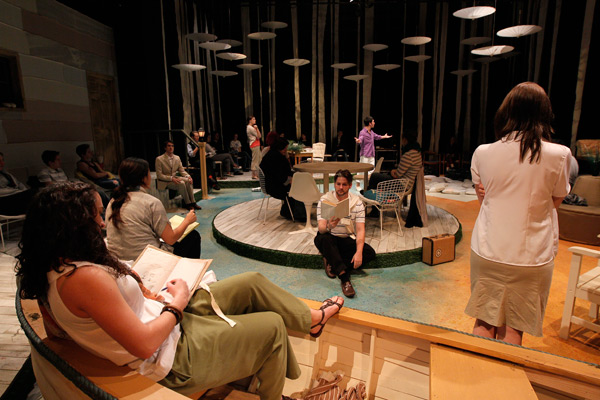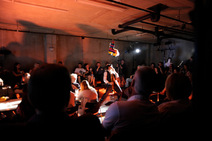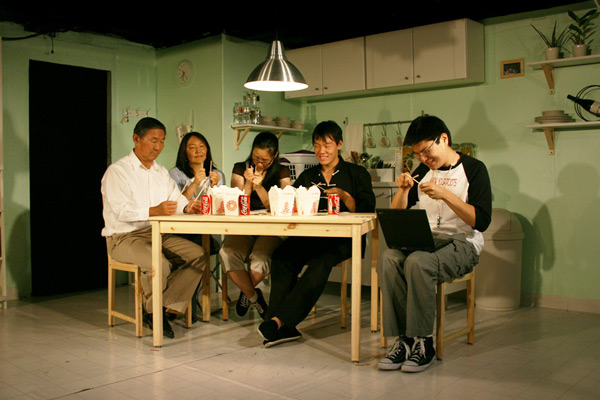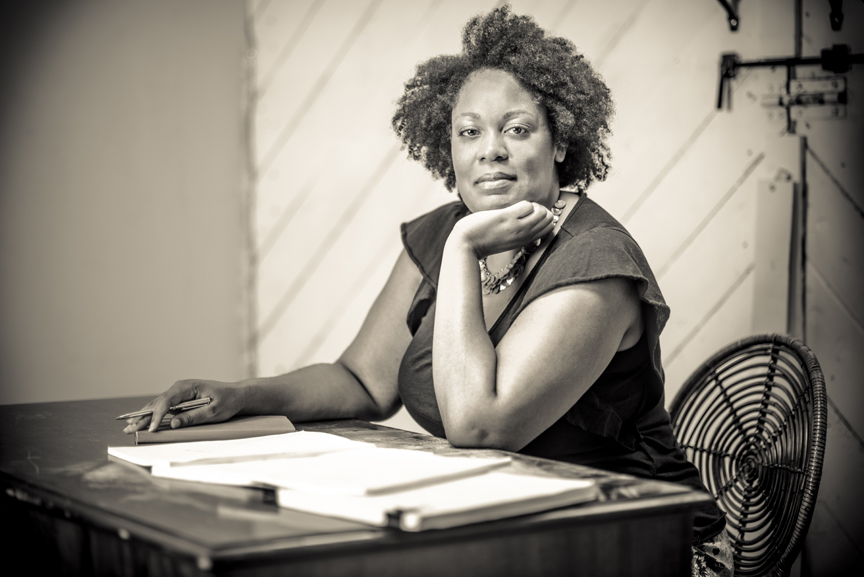|
Jacqueline Lawton: Give us a little background on where you’re from originally, where you grew up, and how you ended up where you are now…
Desdemona Chiang: I was born in Taiwan, immigrated to the states with my parents when I was three, grew up in Rowland Heights, CA (a suburb on the border of LA and Orange County), went to undergrad in the San Francisco Bay Area, grad school for my Directing MFA in Seattle, and am now a freelance director working around the west coast and sometimes NY. JL: Why did you decide to get into theater? Was there someone or a particular show that inspired you? DC: I suppose with a name like Desdemona, it's a bit inevitable. It's funny, because you hear all these wondrous stories from people who can pinpoint a specific moment of inspiration in their lives, like, "I saw Peter Brook’s production of ‘Midsummer Night’s Dream’ when I was twelve that completely changed my life" or "I fell in love with the stage when I played the snowflake princess in my first grade school play." My initiation into the theatre world was not as magical. I actually came into the theatre pretty late in my life. I was a pre-med in undergrad at UC Berkeley studying Molecular Cell Biology, and my career goal at the time was to go medical school and become an Ob-Gyn. It was the first semester of my freshman year, and I was required to fulfill an arts requirement. I was flipping through the course catalog, looking for a class, and my eye landed on a class called "Dramatic Arts 10: Introduction to Acting." And I thought, "Yes. Total bullshit class. Easy A." And the rest, as they say, is history. I ended up finishing college with a double major in Theatre and Integrative Biology. And I chose theatre as a career path because I came to realize that I liked working on plays way more than I liked biochemistry or dissecting human bodies. JL: What is unique about being an artist where you live? DC: I gotta be honest. I have no idea. I think generally speaking, choosing to call oneself an artist in a retail-driven world is pretty unique, period. Sure, it sounds romantic to come across as Bohemian and all, but in reality, it’s also incredibly tough to be taken seriously as a theatre artist. “No, really though, what do you DO for a LIVING? What’s your job? Like, your JOB JOB?” I think that issue transcends geography. So, yeah. I have no idea. JL: You are the Associate Artistic Director of Impact Theatre in Berkeley and Co-Founder / Associate Artist of Azeotrope in Seattle. How did you get involved and what do you hope to achieve? DC: Boy, that’s a big question. I got involved with Impact Theatre over eight years ago initially as an actor for the company, and eventually started directing for them. I founded Azeotrope two years ago with Richard Sloniker, a colleague and dear friend from grad school. Both of these organizations are labors of love, and are essentially manifestations of my desire to prove to the mainstream internet generation that theatre is not boring. Or like church. That it can be worthwhile, interesting, and damn sexy. It’s incredibly selfish, because in the end, it’s also about proving to the future the validity and necessity of my work and the field. My personal goal in life is to reinvigorate the general public’s interest in the theatre. You’ll see this repeated in my “artistic vision” statement below, but I’m a bit obsessed with the role and relevancy of live theatre in a techno-driven world. I think we’re finding that people would rather make their own work than go see someone else’s (thank you, iMovie and YouTube). We are strangely becoming more connected and more isolated at the same time, and role of audience and performer are merging. We want to talk more than we want to listen (thank you, FaceBook and Twitter). The ability to have connection and community is independent of space and time. We don’t have to have our TVs on at the same time in order to be able to watch and talk about the same programs anymore (thank you, TiVo and NetFlix). And for the record, I’m not complaining about technology—I’m a huge technophile myself. I’m shamelessly tethered to my iPad, iPhone and MacBook, I have Skype meetings more often than in-person meetings, and I pride myself in the fact that I travel and work with great efficiency while still staying connected to my colleagues. But I think it comes at a cost. The last time I remember being part of a collective shared experience was the night of the 2008 Elections. And before that, 9-11. The rest I’ve been able to TiVo for later, when I can watch or experience it on my own time, on my own terms. So, given that individuals are now more virtually connected AND autonomously empowered than ever, why would anyone bother going to a dark room and sitting still with a bunch of strangers to see someone else tell a story that they have little to no context for? We keep talking about being relevant and accessible. But I have moments where I think that maybe we should embrace the fact that theatre is a niche market and really run with that instead. I don’t know yet. That’s what I’m trying to figure out. JL: Who nominated you to be a Young Leaders of Color Award Recipient? DC: I was nominated to be a YLC by Joseph Haj, the Artistic Director of Playmakers Repertory Company in Chapel Hill, NC. I assisted Joe on his productions of Henry IV and Henry V this past winter, and feel very lucky to have him as an advocate and friend. JL: What excited you most about taking part in the conference and the program? DC: Meeting new colleagues and friends, no question. There aren’t many of us young artists of color out there. So let’s get to know each other. And let’s share and bitch and then do something about it. JL: What was the most valuable lesson you learned from the conference? DC: Seth Godin’s speech was incredibly insightful, particularly with his definition of “tribes” and what it means to be “remarkable.” I think as theatre artists, we are inclined to think about our audiences, but our audiences are not necessarily our tribe. We constantly tailor our work and programming because we want to serve this really specific group of people that have nothing in common with each other, save for the fact that their butts occasionally end up in our seats. Seth put in perspective for me a different notion of leadership—who it is that we are leading, what the connection is to our constituency, and why on earth would anyone follow me? And for me, it broke down into two quotes (pithy as they may sound, they had a big impact): All “remarkable” is is worth remarking about. Give people something to talk about. Are you going to tell people what to do, or are you going to create a place for them to come and bring their friends? The big take-away lesson for me is that, in the end, you can’t make anyone do anything. All you can do is make yourself as interesting and worthwhile as possible, and hopefully if you have the goods, people will pay attention and join you. JL: What are some of the challenges you have faced as an artist of color? What have you learned from these experiences? DC: I’ve found that as an “artist of color,” we’re given the responsibility of being role models and spokespeople without asking for it. For some reason, my reputation and my work subliminally impacts the reputations and works of other artists of color, specifically artists of MY color. In other words: If I fuck up, I not only fuck it up for me, I kinda fuck it up for the other Asian theatre artists out there. If I look bad, we ALL look bad. It’s probably because there aren’t enough of us out there to begin with, so the first role we step into when we become visible is one of modeling and general representation. When an artist of color fails, the rest of us wears a portion of that failure, whether we like it or not. Luckily, the converse is also true—when one succeeds, the entire group feels empowered and a shared sense of pride. I think this inexorable association is why some of us try to dissociate and separate ourselves from our culture and other artists of color whose work has no direct connection to us. We don’t want to be defined by others. But at this point, it feels pretty unavoidable. So in the end, I’ve found that as I get better, I’d BETTER get better. JL: What advice do you have for other young artists of color in the theatre? DC: It’s OK to call yourself a young artist of color. It’s also OK to hate being called a young artist of color. It’s not an empirical definition of who you are. JL: What’s up next for you and where can keep up with your amazing work? DC: I’m currently working with playwright Christopher Chen on his new play “The Hundred Flowers Project,” which is being presented at the Bay Area Playwrights Festival this month and getting its world premiere with Crowded Fire this fall. I’m also directing Marissa Lichwick’s solo show “Yellow Dress” for NYC Fringe in August, and a couple of stellar one acts by Naomi Wallace and Silva Semerciyan for Golden Thread Production’s ReOrient Festival this November. For folks who want to keep up with me, at this time it’s best to find me on Facebook or follow me on twitter (@deschiang). Hurray for social networking.
0 Comments
Your comment will be posted after it is approved.
Leave a Reply. |
My BlogI'm a playwright, dramaturg, and teaching artist. It is here where you'll find my queries and musings on life, theater and the world. My posts advocate for diversity, inclusion, and equity in the American Theatre and updates on my own work. Please enjoy!
Categories
All
Archives
June 2020
Reading List
|



